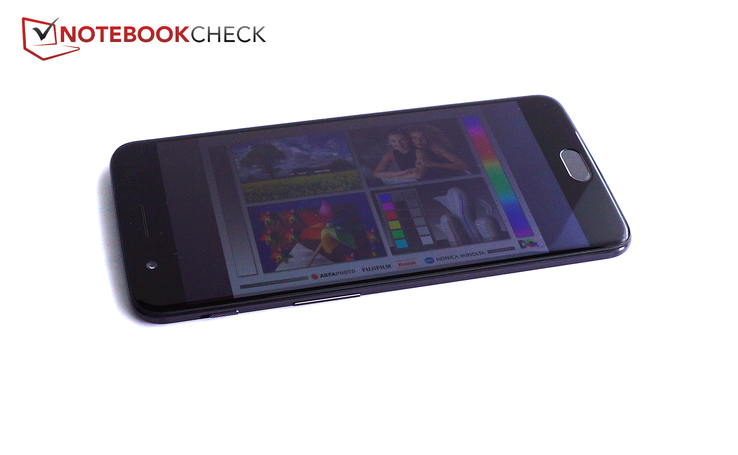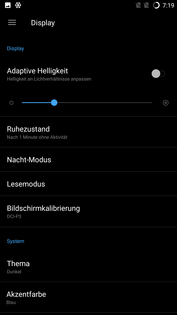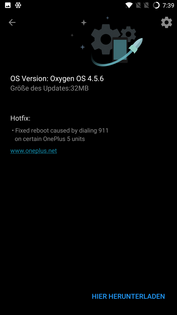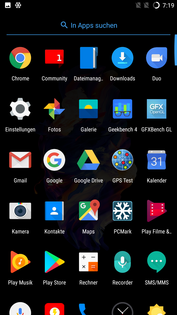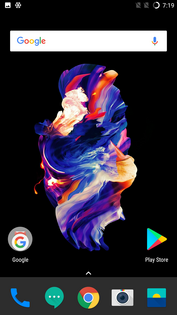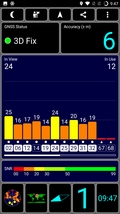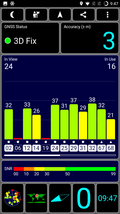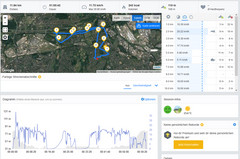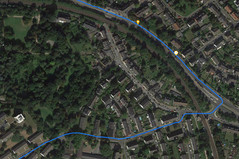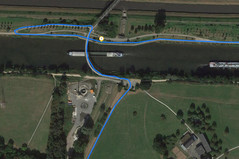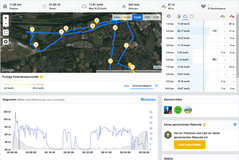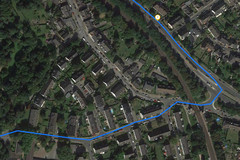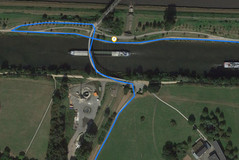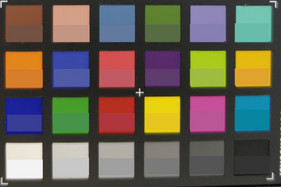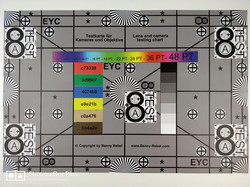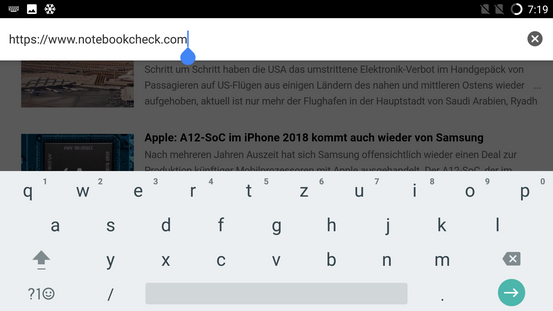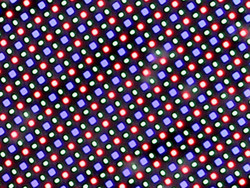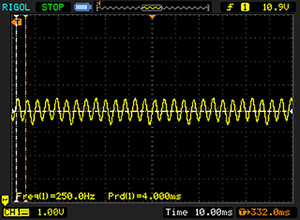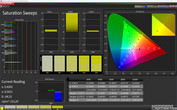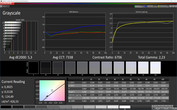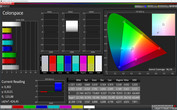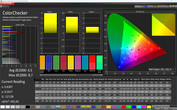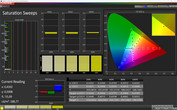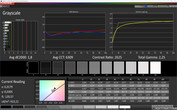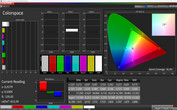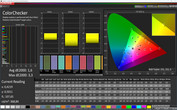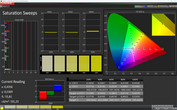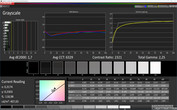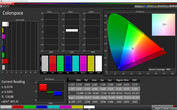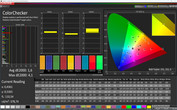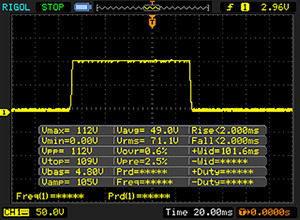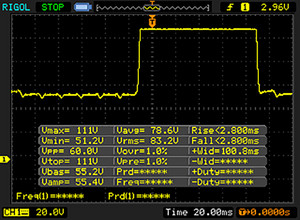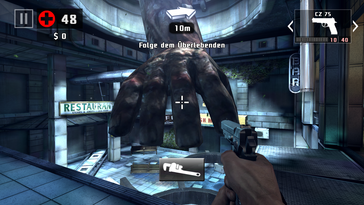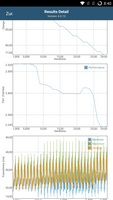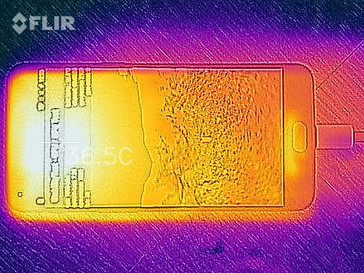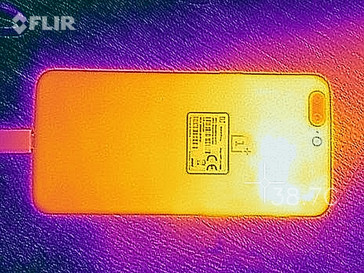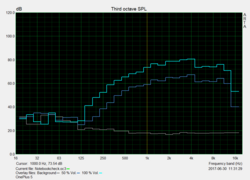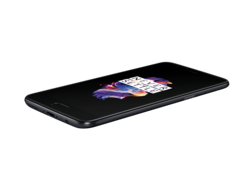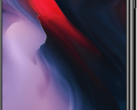OnePlus 5 Smartphone Review
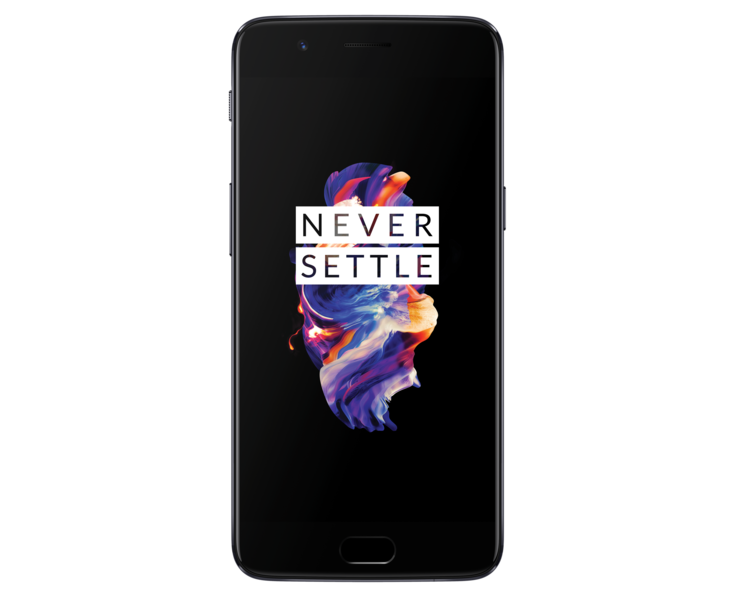
For the original German review, click here.
1, 2, 3, T, 5 - this is how they count at OnePlus. Perhaps with another X somewhere in the middle. Of course the Chinese manufacturer knows how to count - but the number four is considered unlucky in Asia, so OnePlus has decided to skip that number for their smartphones. After uncountable leaks, the highly anticipated OnePlus 5 - the manufacturer's sixth smartphone - was presented on June 20th 2017. Its predecessors were considered "flagship killers"; direct distribution enabled the manufacturer to keep the price low. It also has warehouses in Europe and the US, which is important to offer buyers an easy purchase without the hassles of importing individual phones from China. At first, OnePlus worked with the open-source CyanogenMod, an Android spin-off. The manufacturer has now developed its source code into its own OxygenOS. One great advantage is that all smartphones have dual SIM capacity.
The OnePlus 5 costs between $530 and $625. It is still cheaper than many flagship devices; the OnePlus One, however, was available for $299. So you can see, the OnePlus 5 is not quite as good of a bargain anymore. Other manufacturers have also started to use direct distribution, such as Huawei for its subsidiary Honor. The Honor 8 Pro is a direct competitor concerning both price and features. But if the device really wants to remain a "flagship killer", it has to act like one. We have compared it with the Samsung Galaxy S8 and the iPhone 7 Plus. The Samsung Galaxy S7 Edge, still competitive in performance and features a year later, is now cheap enough to compete on the OnePlus 5 price point. It also has to outdo its predecessor, the OnePlus 3T. Is it worth switching to the newer version?
Update 4/20/2018: OnePlus has released a new firmware update containing Android 8.1 Oreo. Details can be found in the software section of this review.
Case
Not many changes have been made to the case since the previous version. So few changes, that only experts can tell whether they are looking at a OnePlus 3T or a OnePlus 5. The measurements have changed slightly, however, so accessories from the predecessor might not fit. There are two color options: Slate Gray, which has a slightly purple tinge, and Midnight Black.
The case feels very nice and of good quality. Its back is made of aircraft aluminum. This looks great, but is prone to fingerprints. We also noticed that our test unit is not necessarily resistant to scratches. The OnePlus 5 weighs 153 grams (~5.3 oz) and is the lightest smartphone of all comparison devices. The case is very stable and resists pressure and warping. It is not water or dust proof, however, which is a standard among most current flagship phones.
The battery cannot be removed and neither can the case be opened. The exchangeable Style Covers of the first generations have been gone for quite a while already.
Connectivity
There are two versions of the OnePlus 5: Our test unit (in Slate Gray) has 64 GB of storage and 6 GB of RAM, while the Midnight Black version has 128 GB of storage and 8 GB of RAM. Neither version has a microSD slot, but both offer two SIM card slots.
The USB-C port is limited to USB 2.0 speeds, which is surprising for a "flagship killer" in the year 2017. It does support USB OTG and Near Field Communication.
Software
Oxygen OS has not made a lot of changes to the basic Android 7.1, but comes with a dark interface ex-works - a relief for light-sensitive users. At the time of testing the security patches were a little outdated: May 1st 2017. But until now, OnePlus has done a good job in terms of security updates. The old OnePlus 2 is still receiving security updates even two years after its launch, although it has not been granted an update to the current Oxygen OS 4.
The only additional app that OnePlus has installed is its own Community App. Apart from that, only the gallery and camera app have been exchanged. If you love clean Android phones, you will be very happy with this. A small extra: if you swipe right on the home screen, you will get to a configurable page with the most frequently used apps, contacts and further information.
There are various other features, such as a Pocket Mode, which prevents accidental operation when the light sensor is covered. The device also has a special Gaming Mode, which turns off notifications etc. The interface can be customized as well, for example the status bar and home screen. A great advantage is that the system reboots really quickly after a restart.
Update 08/21/2017: OnePlus rolls out the update to the firmware-build A5000_23_170803 (Oxygen OS 4.5.8), which is about 310 MB. New features are the system font OnePlus Slate and electronic image stabilization (EIS) for ultra HD video recordings. Moreover, battery runtimes and WiFi stability are supposed to be improved. In addition, other bugs were improved and Google security patches (as of 07/01/2017) implemented.
Update 1/2/2018: Firmware A5000_23_171205 (Oxygen OS 4.5.15, 74 MB) has been released. It is supposed to improve the device's GPS capabilities and fix a several bugs, among others one that prevented users from selecting individual notifications for alarms. Security patches have been brought up to date (10/1/2017).
Update 1/27/2018: Our review unit has received Oxygen OS 5.0.1 (1.59 GB) based on Android 8.0. The latest operating system contains a number of new features, among others an improved camera UI and enhanced capturing capabilities. System performance has also been improved once more: AnTuTu scores 185,932 points now (previously: 177,156) and PCMark Work 2.0 scores have increased from 6,579 to 6,915 points. Security patches have been brought up to date (12/1/2017).
Update 4/20/2018: Rather unexpectedly soon OnePlus has release a new firmware containing Oxygen OS 5.1 (around 1.7 GB) based on the most current version of Android, 8.1 Oreo. Security patches have also been updated (4/1/2018).
Communication & GPS
OnePlus has proudly announced its new smartphone as a "real global player", referring to the total of 34 frequency bands. This should ensure reception from anywhere in the world. We tested the device indoors in an urban area, where the device had full LTE reception of the German Vodafone network.
The modem manages 600 MBit/s, which is fast, but not quite as fast as the Samsung Galaxy S8: that device's modem can download data in up to one gigabit per second. The question is, does this actually make any difference in everyday life? Not at the moment. Mobile operators are not yet equipped for such high speeds. On top of that, you have to share the entire bandwidth with all other smartphones that are currently connected to a certain cell...
The OnePlus 5's Wi-Fi capabilities look good: it supports 802.11 a/b/g/n/ac and can also communicate via the less-used 5.0-GHz network. It has very fast reception - the fastest of all comparison devices. Only the Galaxy S8 is a little faster at sending; all other devices fall behind again.
The OnePlus 5 had very good reception near the router and web pages were loaded quickly. At a distance of ten meters (~33 feet) and through three walls, reception was at 50%, but pages still loaded very quickly.
| Networking | |
| iperf3 transmit AX12 | |
| Samsung Galaxy S8 (Linksys EA8500) | |
| OnePlus 5 (Linksys EA8500, 5.0 GHz) | |
| Samsung Galaxy S7 Edge (Linksys EA8500, 5.0 GHz) | |
| OnePlus 3T | |
| Honor 8 Pro (Linksys EA8500, 5.0 GHz) | |
| iperf3 receive AX12 | |
| OnePlus 5 (Linksys EA8500, 5.0 GHz) | |
| Samsung Galaxy S8 (Linksys EA8500) | |
| Samsung Galaxy S7 Edge (Linksys EA8500, 5.0 GHz) | |
| OnePlus 3T | |
| Honor 8 Pro (Linksys EA8500, 5.0 GHz) | |
The GPS module could locate us within six meters (~20 feet) indoors and within three meters (~3 feet) outdoors.
However, that does not yet answer the question of how the GPS fares in everyday use. To find out, we packed the OnePlus 5 into a backpack and took it on a bicycle ride together with the Garmin Edge 500 - a professional navigation system for bicyclists. The measured distance is almost the same on both devices, which is great. The OnePlus 5 also has a surprisingly accurate record of the journey. Only occasionally did it have to pull a straight line between two points set a little too far apart. The Garmin Edge 500 is even more exact, but the performance of the GPS module of the OnePlus 5 is nonetheless impressive.
Telephone & Voice Quality
The telephone app is Google's standard application, but looks more elegant thanks to the dark interface. It works very well and can be used intuitively. The app supports all necessary functions.
Concerning voice quality, we noticed that both the earpiece and the speakers can be turned up very loud if necessary. This can be helpful in loud surroundings. We also liked the fact that even at maximum volume, the sound quality remained good without any droning or other noises. The microphone is sensitive, so that our contact could hear us clearly even when we spoke quietly or via the speakerphone. People who speak with a loud voice might even have to hold back a little, or the person on the other side has to turn down the volume. Fortunately, background noises are filtered out very well, despite the microphone's high sensitivity. Overall, the OnePlus 5 gave a very good impression for voice quality.
The first buyers of the OnePlus 5 did encounter one strange and potentially dangerous problem: They could not make any emergency phone calls. When they dialed 911 or 122, the OnePlus 5 rebooted. In the meantime, OnePlus has published an update that deals with this fault.
Cameras
OnePlus has particularly emphasized the dual camera on the back of its new smartphone. It consists of the Sony IMX398 sensor, which was already used in the OnePlus 3T and works as a wide-angle lens, and Sony's IMX 350 with a higher resolution of 20 MP, that works as telephoto lens. The two lenses work together to offer 1.6x optical zoom and portrait photos with a blurry background effect. The camera has no optical image stabilizer.
The main camera reaches 87 points in the DxOMark, which is less than most current flagships can offer, for example the Galaxy S8. This must be a little embarrassing as experts from DxO actually helped with developing the camera - but at least it shows that DxO remains neutral. Normal photographs are taken with the lower 16-MP resolution. In daylight, photographs seem a little blurry, which could be due to the missing image stabilizer. The shot of the river shows mushy areas around the trees in the background. This should not happen with a flagship phone. Photographs have some noise in all lighting situations, but it increases in low lighting. These shots seem very blurry and low in details. The Galaxy S8 clearly does a better job in this area.
The video function of the main camera supports 4K video recording and can make time-lapse as well as slow-motion videos with 120 frames per second. These features are easy to use and reliable. The 4K videos appear sharp and well lit - exposure adapts quickly and efficiently to different light situations. You can manually influence focus and lighting by tapping the screen. The slow-motion function makes it easy to take fancy videos in slow motion, but the resolution is only 720p. Time-lapse videos can be recorded in 1080p. But be aware: another strange bug has mixed up the audio channels for the video, which means that sounds recorded by the left microphone is later played on the right speaker and vice versa.
OnePlus has adapted the camera software for its main camera: it has its own portrait mode, which creates classy images with a blurred background and also has a manual professional mode, in which various parameters can be adjusted manually. Images can be saved in RAW format, in order to process them better later on. The software automatically adds a watermark to the photographs with the main camera, which highlights OnePlus' dual camera technology - as you can see from our sample photos. This can be turned off in the settings.
At the front of the OnePlus 5 is another sensor from Sony - the IMX 371 with 16 MP. It takes rather sharp and detailed images.
Update 08/21/2017: Electronic image stabilization is available for recording Ultra HD videos (3840 × 2160 pixels) now. We could already examine it. The camera records notably smoother and entirely compensates small movements without making recordings look unnatural.
We also looked at the main camera in lab conditions. We noticed straight away that colors appeared rather pale in these set lighting conditions. Sharpness is not perfect after a closer look. Some color surfaces appear blotchy and images become very blurry towards the sides. Even when photographing the color chart, the screen becomes weirdly blurry and colors appear patchy. The colors are quite different to the reference values. Overall, we were rather disappointed that of all devices it was the OnePlus 5, which explicitly advertised its great camera, gave such a mediocre performance. But really, the OnePlus 5 can actually take quite nice photographs in everyday situations, although it will hardly reach the quality of other high-end smartphones.
Accessories & Warranty
OnePlus knows how to present its devices, as we already saw from the previous versions. A message from CEO Carl Pei and a photograph taken by a OnePlus smartphone are hidden in the bright red cardboard tray. But be aware that even if a photograph was taken with a certain device, this does not mean that they did not use additional lenses or that there was no post-editing. The box also contains a rather large power supply and a smart-looking USB cable in the colors of OnePlus: white and red.
You can find further accessories in the OnePlus online shop: a new power supply with cable costs $33, a car charger that supports Dash Charge costs about $30. You can get cases in various designs for $22 and a headset for $20 (OnePlus Bullets). The manufacturer also offers bundles at a reduced price.
OnePlus offers a warranty of up to 24 months depending on the country you live in. This warranty is also valid in foreign countries, for example if you move to another country. Please see our Guarantees, Return policies and Warranties FAQ for country-specific information.
Input Devices & Handling
The display of the OnePlus 5 is touch-sensitive right into the corners and is easy to use. OnePlus uses Android's standard keyboard app. If you prefer a different keyboard, you can download one from the Google Play store.
The fingerprint sensor below the screen instantly wakes the telephone from standby and unlocks it simultaneously. It also functions as the Home button, with illuminated capacitive Android menu keys on either side. The keys are very easy to use, but can also be put onto the screen if you prefer.
The hardware buttons are on the right and left sides of the device: on the right is the standby button and on the left is the volume rocker. Both buttons are easily identified by touch and seem of high quality with a clear pressure point. The volume rocker is placed at an unfamiliar height. You will have to use your middle finger to operate the rocker, or move your hand if you want to use the pointer of your right hand. Good news for left-handed people: you can easily use your thumb for the volume rocker. Just like on the iPhone, the OnePlus 5 has a sliding switch on the left side of the case. This can be used to turn off the ring tone or all notifications - various modes can be configured individually.
Handling is expanded with the help of various gestures, for example for starting apps; the possibility of writing letters onto the standby screen; or by the fact that you can simply flip the device to put it on silent. The standby display shows new messages in black and white. Similar to the Motorola smartphones, the screen reacts to lifting of the device, which is quite practical.
Display
Do we really need a higher resolution than Full HD on a 5.5-inch display? This crucial question will decide the value of the OnePlus 5 for many users. Apart from Apple and its iPhone 7, all other manufacturers have increased the resolution of their smartphones. We believe that the difference between Full HD and a higher resolution is hardly visible on such a small display and that a pixel density of 400 ppi, as the OnePlus 5 has, is sufficient. Anyway, the display of the OnePlus 5 has many other qualities: it is an AMOLED display and the organic diodes can be turned on and off individually and do not need any background lighting. This means the screen can display complete blackness; it also supports many color spaces. Continue reading below to find out more.
The average brightness is similar to that of the OnePlus 3T and clearly below the brightness of other smartphone screens in our comparison field: 431 cd/m2 is a good value, but it cannot compete with the 564 cd/m2 of the Samsung Galaxy S8. Interestingly enough, we measured a higher maximum brightness of 478 cd/m2 in the realistic APL50 test. Brightness distribution is quite good at 93% and large surfaces of color are displayed consistently.
First buyers reported a strange jelly-like effect when scrolling. This means that content stretches a little before moving. This effect is always visible with the OnePlus 5 and is probably due to the display being installed twisted by 180 degrees. Luckily, we felt that the effect was not particularly annoying.
| |||||||||||||||||||||||||
Brightness Distribution: 93 %
Center on Battery: 426 cd/m²
Contrast: ∞:1 (Black: 0 cd/m²)
ΔE ColorChecker Calman: 1.6 | ∀{0.5-29.43 Ø4.77}
ΔE Greyscale Calman: 1.7 | ∀{0.09-98 Ø5}
Gamma: 2.25
CCT: 6329 K
| OnePlus 5 AMOLED, 1920x1080, 5.5" | OnePlus 3T Optic-AMOLED, 1920x1080, 5.5" | Samsung Galaxy S8 Super AMOLED, 2960x1440, 5.8" | Apple iPhone 7 Plus IPS, 1920x1080, 5.5" | Honor 8 Pro IPS, 2560x1440, 5.7" | Samsung Galaxy S7 Edge Super AMOLED, 2560x1440, 5.5" | |
|---|---|---|---|---|---|---|
| Screen | -155% | -20% | 21% | -45% | 14% | |
| Brightness middle (cd/m²) | 426 | 421 -1% | 566 33% | 557 31% | 541 27% | 554 30% |
| Brightness (cd/m²) | 431 | 430 0% | 564 31% | 553 28% | 514 19% | 552 28% |
| Brightness Distribution (%) | 93 | 84 -10% | 94 1% | 97 4% | 91 -2% | 96 3% |
| Black Level * (cd/m²) | 0.35 | 0.3 | ||||
| Colorchecker dE 2000 * | 1.6 | 7.1 -344% | 2.7 -69% | 1.4 12% | 3.2 -100% | 1.59 1% |
| Colorchecker dE 2000 max. * | 4.1 | 15.3 -273% | 5.4 -32% | 3.1 24% | 7.2 -76% | 2.56 38% |
| Greyscale dE 2000 * | 1.7 | 6.8 -300% | 3.1 -82% | 1.3 24% | 4 -135% | 2.01 -18% |
| Gamma | 2.25 98% | 2.23 99% | 2.15 102% | 2.21 100% | 2.27 97% | 2.01 109% |
| CCT | 6329 103% | 7866 83% | 6335 103% | 6667 97% | 7120 91% | 6321 103% |
| Color Space (Percent of AdobeRGB 1998) (%) | 81.57 | 63.1 | 82.12 | |||
| Color Space (Percent of sRGB) (%) | 99.87 | 99.83 | 99.98 | |||
| Contrast (:1) | 1591 | 1803 |
* ... smaller is better
Screen Flickering / PWM (Pulse-Width Modulation)
| Screen flickering / PWM detected | 250 Hz | ||
The display backlight flickers at 250 Hz (worst case, e.g., utilizing PWM) . The frequency of 250 Hz is relatively low, so sensitive users will likely notice flickering and experience eyestrain at the stated brightness setting and below. In comparison: 53 % of all tested devices do not use PWM to dim the display. If PWM was detected, an average of 8084 (minimum: 5 - maximum: 343500) Hz was measured. | |||
In theory, contrast is infinite as the OLEDs can be turned off completely, as described above. This means colors appear more vivid with stronger contrasts, deeper blacks and lighter whites. A special feature of the OnePlus 5 is that apart from manually calibrating the white balance or optimum values for sRGB, you can also calibrate the optimum for the DCI P3 color space. This color space is the standard for digital film projection in the US and seems noticeably warmer than sRGB or AdobeRGB due to less greens and blues. You can also activate night mode, which reduces the blue light in the screen and is supposed to help you sleep better. This mode was very comfortable to use.
We tested the various color spaces sRGB, AdobeRGB and DCI P3 with the CalMAN software and the spectrophotometer. In general, colors are displayed very exactly on the screen of the OnePlus 5, although we did notice a slight blue tinge in the lighter grayscales with AdobeRGB. This did not appear or was not noticeable in the other color spaces. The color space coverage (roughly measured by CalMAN) is the best with AdobeRGB, the other two color spaces are covered only slightly less.
The display uses Pulse Width Modulation with a frequency of 250 Hz to lower screen brightness. This means that the screen turns on and off 250 times per second, which can lead to problems for sensitive users.
Display Response Times
| ↔ Response Time Black to White | ||
|---|---|---|
| 4 ms ... rise ↗ and fall ↘ combined | ↗ 2 ms rise | |
| ↘ 2 ms fall | ||
| The screen shows very fast response rates in our tests and should be very well suited for fast-paced gaming. In comparison, all tested devices range from 0.1 (minimum) to 240 (maximum) ms. » 15 % of all devices are better. This means that the measured response time is better than the average of all tested devices (20.2 ms). | ||
| ↔ Response Time 50% Grey to 80% Grey | ||
| 5.6 ms ... rise ↗ and fall ↘ combined | ↗ 2.8 ms rise | |
| ↘ 2.8 ms fall | ||
| The screen shows very fast response rates in our tests and should be very well suited for fast-paced gaming. In comparison, all tested devices range from 0.165 (minimum) to 636 (maximum) ms. » 17 % of all devices are better. This means that the measured response time is better than the average of all tested devices (31.6 ms). | ||
The OnePlus is also convincing outdoors. Its AMOLED display is bright enough to be read in bright light. Only in direct sunlight might you have to move into the shade. Viewing angles are good too with no color distortion towards the sides or towards the top.
Performance
The OnePlus 5 is a very fast smartphone. It is equipped with the current top SoC from Qualcomm, the Snapdragon 835, with a maximum clock rate of 2.45 GHz and 6 - 8 GB of RAM. This can be seen from the benchmarks in which the device often made it right to the top.
But be aware: Like with the previous OnePlus models, the manufacturer has again tried to manipulate benchmark results. XDA Developers found out that the smartphone can recognize benchmarks and then forces maximum processor clock rates. Even if OnePlus claims that this is simply a measure to show performance under "everyday conditions", this information leaves a bad taste in our mouths. Especially as it would not have been necessary: The smartphone is very quick in menus and apps and - after being tricked to not recognize the benchmarks - reaches good, although not perfect, results according to XDA Developers. In the Geekbench 4.1, for example, it still has very good results. Apparently, the PCMark benchmark is not affected and the device gets good results there, too.
When the GPU, an Adreno 540, is under full load, thermal throttling can occur and case temperatures can rise very high (we will give further information about this in our chapter on temperatures). Apart from this, the graphics card works fast in our benchmarks, although these values are to be taken with a pinch of salt: In the GFXBench, for example, some of the results between off-screen and on-screen benchmarks are very far apart, although they were all measured at the same resolution.
Because of the unreliable measurements, our realizations and the reports from XDA Developers, we have decided to give the OnePlus 5 less points in the area of performance.
| AnTuTu v6 - Total Score (sort by value) | |
| OnePlus 5 | |
| OnePlus 3T | |
| Samsung Galaxy S8 | |
| Apple iPhone 7 Plus | |
| Honor 8 Pro | |
| Samsung Galaxy S7 Edge | |
| Sony Xperia XZ Premium | |
| HTC U11 | |
| PCMark for Android | |
| Work performance score (sort by value) | |
| OnePlus 5 | |
| OnePlus 3T | |
| Samsung Galaxy S8 | |
| Honor 8 Pro | |
| Samsung Galaxy S7 Edge | |
| Sony Xperia XZ Premium | |
| HTC U11 | |
| Work 2.0 performance score (sort by value) | |
| OnePlus 5 | |
| Samsung Galaxy S8 | |
| Honor 8 Pro | |
| Sony Xperia XZ Premium | |
| HTC U11 | |
| Geekbench 4.4 | |
| 64 Bit Single-Core Score (sort by value) | |
| OnePlus 5 | |
| Samsung Galaxy S8 | |
| Honor 8 Pro | |
| Sony Xperia XZ Premium | |
| HTC U11 | |
| 64 Bit Multi-Core Score (sort by value) | |
| OnePlus 5 | |
| Samsung Galaxy S8 | |
| Honor 8 Pro | |
| Sony Xperia XZ Premium | |
| HTC U11 | |
| Compute RenderScript Score (sort by value) | |
| OnePlus 5 | |
| Samsung Galaxy S8 | |
| Sony Xperia XZ Premium | |
| HTC U11 | |
| GFXBench (DX / GLBenchmark) 2.7 | |
| T-Rex Onscreen (sort by value) | |
| OnePlus 5 | |
| OnePlus 3T | |
| Samsung Galaxy S8 | |
| Apple iPhone 7 Plus | |
| Honor 8 Pro | |
| Samsung Galaxy S7 Edge | |
| Sony Xperia XZ Premium | |
| HTC U11 | |
| 1920x1080 T-Rex Offscreen (sort by value) | |
| OnePlus 5 | |
| OnePlus 3T | |
| Samsung Galaxy S8 | |
| Apple iPhone 7 Plus | |
| Honor 8 Pro | |
| Samsung Galaxy S7 Edge | |
| Sony Xperia XZ Premium | |
| HTC U11 | |
| GFXBench 3.0 | |
| on screen Manhattan Onscreen OGL (sort by value) | |
| OnePlus 5 | |
| OnePlus 3T | |
| Samsung Galaxy S8 | |
| Apple iPhone 7 Plus | |
| Honor 8 Pro | |
| Samsung Galaxy S7 Edge | |
| Sony Xperia XZ Premium | |
| HTC U11 | |
| 1920x1080 1080p Manhattan Offscreen (sort by value) | |
| OnePlus 5 | |
| OnePlus 3T | |
| Samsung Galaxy S8 | |
| Apple iPhone 7 Plus | |
| Honor 8 Pro | |
| Samsung Galaxy S7 Edge | |
| Sony Xperia XZ Premium | |
| HTC U11 | |
| GFXBench 3.1 | |
| on screen Manhattan ES 3.1 Onscreen (sort by value) | |
| OnePlus 5 | |
| OnePlus 3T | |
| Samsung Galaxy S8 | |
| Apple iPhone 7 Plus | |
| Honor 8 Pro | |
| Samsung Galaxy S7 Edge | |
| Sony Xperia XZ Premium | |
| HTC U11 | |
| 1920x1080 Manhattan ES 3.1 Offscreen (sort by value) | |
| OnePlus 5 | |
| OnePlus 3T | |
| Samsung Galaxy S8 | |
| Apple iPhone 7 Plus | |
| Honor 8 Pro | |
| Samsung Galaxy S7 Edge | |
| Sony Xperia XZ Premium | |
| HTC U11 | |
| GFXBench | |
| on screen Car Chase Onscreen (sort by value) | |
| OnePlus 5 | |
| OnePlus 3T | |
| Samsung Galaxy S8 | |
| Honor 8 Pro | |
| Samsung Galaxy S7 Edge | |
| Sony Xperia XZ Premium | |
| HTC U11 | |
| 1920x1080 Car Chase Offscreen (sort by value) | |
| OnePlus 5 | |
| OnePlus 3T | |
| Samsung Galaxy S8 | |
| Honor 8 Pro | |
| Samsung Galaxy S7 Edge | |
| Sony Xperia XZ Premium | |
| HTC U11 | |
| Lightmark - 1920x1080 1080p (sort by value) | |
| Samsung Galaxy S8 | |
| Samsung Galaxy S7 Edge | |
| HTC U11 | |
| Basemark X 1.1 | |
| Medium Quality (sort by value) | |
| Samsung Galaxy S8 | |
| Samsung Galaxy S7 Edge | |
| HTC U11 | |
| High Quality (sort by value) | |
| Samsung Galaxy S8 | |
| Samsung Galaxy S7 Edge | |
| HTC U11 | |
| Basemark ES 3.1 / Metal - offscreen Overall Score (sort by value) | |
| Samsung Galaxy S8 | |
| Apple iPhone 7 Plus | |
| Samsung Galaxy S7 Edge | |
| HTC U11 | |
| Epic Citadel - Ultra High Quality (sort by value) | |
| Samsung Galaxy S8 | |
| Samsung Galaxy S7 Edge | |
| HTC U11 | |
The OnePlus 5 has average performance in the browser. The demanding HTML5 game letsplay.ouigo.com is displayed smoothly and without any time lags. Pages load quickly and surfing can be very enjoyable with the OnePlus 5.
| JetStream 1.1 - Total Score | |
| Apple iPhone 7 Plus | |
| Samsung Galaxy S7 Edge | |
| OnePlus 5 | |
| HTC U11 | |
| Samsung Galaxy S8 | |
| Sony Xperia XZ Premium | |
| Honor 8 Pro | |
| OnePlus 3T | |
| Octane V2 - Total Score | |
| Apple iPhone 7 Plus | |
| Samsung Galaxy S7 Edge | |
| Samsung Galaxy S8 | |
| OnePlus 5 | |
| HTC U11 | |
| Sony Xperia XZ Premium | |
| Honor 8 Pro | |
| OnePlus 3T | |
| Mozilla Kraken 1.1 - Total | |
| Sony Xperia XZ Premium | |
| Honor 8 Pro | |
| HTC U11 | |
| OnePlus 3T | |
| OnePlus 5 | |
| Samsung Galaxy S7 Edge | |
| Samsung Galaxy S8 | |
| Apple iPhone 7 Plus | |
| WebXPRT 2015 - Overall | |
| Apple iPhone 7 Plus | |
| Samsung Galaxy S8 | |
| Samsung Galaxy S7 Edge | |
| HTC U11 | |
| OnePlus 5 | |
| Sony Xperia XZ Premium | |
| Honor 8 Pro | |
| OnePlus 3T | |
* ... smaller is better
As there is no microSD reader, we naturally cannot compare its performance. The internal UFS storage has difficulties with Random Write, but apart from that, the smartphone accesses its internal storage quickly.
| OnePlus 5 | OnePlus 3T | Samsung Galaxy S8 | Honor 8 Pro | Samsung Galaxy S7 Edge | Sony Xperia XZ Premium | HTC U11 | |
|---|---|---|---|---|---|---|---|
| AndroBench 3-5 | 53% | -7% | 174% | -30% | -18% | 70% | |
| Sequential Read 256KB (MB/s) | 748 | 436.4 -42% | 793 6% | 738 -1% | 487.3 -35% | 687 -8% | 717 -4% |
| Sequential Write 256KB (MB/s) | 201.5 | 165.3 -18% | 193.2 -4% | 187.1 -7% | 145.1 -28% | 194 -4% | 206.4 2% |
| Random Read 4KB (MB/s) | 141 | 123.6 -12% | 127.2 -10% | 166.4 18% | 86.7 -39% | 74.1 -47% | 91.4 -35% |
| Random Write 4KB (MB/s) | 19.3 | 74.4 285% | 15.25 -21% | 151.6 685% | 15.79 -18% | 17.2 -11% | 80 315% |
| Sequential Read 256KB SDCard (MB/s) | 63.9 | 54.2 | 76.4 | 36.79 | 68.8 | ||
| Sequential Write 256KB SDCard (MB/s) | 53.5 | 32.16 | 50.4 | 33.31 | 46.25 |
Games
The OnePlus 5 does a good job in gaming thanks to its fast SoC: We managed a constant 30 frames per second in Asphalt 8 and 60 frames in Dead Trigger 2. Less demanding games such as Angry Birds run smoothly and without any problems. It is important that the graphics unit supports many graphics interfaces and is prepared for future developments in the coming years.
Controlling via touchscreen and position sensor works very well.
| Asphalt 8: Airborne | |||
| Settings | Value | ||
| high | 30 fps | ||
| very low | 30 fps | ||
| Dead Trigger 2 | |||
| Settings | Value | ||
| high | 60 fps | ||
Emissions
Temperature
At first the temperature development of the OnePlus 5 appeared to be normal: we measured a maximum of 37.6 °C (~100 °F), which is noticeable but not uncomfortable. While idling we measured no noticeable heat development.
By chance, we picked the device up while we were running the battery test from GFXBench - we used the Manhattan 3.1 version - and almost burned our fingers on it: The smartphone heats up a lot at the top of the back, which could become uncomfortable particularly when it is in a trouser pocket. The device could not keep up its full performance either; performance dropped after only six rounds of the benchmark and ended up 11% lower than at the beginning after 30 rounds.
(+) The maximum temperature on the upper side is 37.6 °C / 100 F, compared to the average of 35.2 °C / 95 F, ranging from 21.9 to 247 °C for the class Smartphone.
(+) The bottom heats up to a maximum of 35.8 °C / 96 F, compared to the average of 34 °C / 93 F
(+) In idle usage, the average temperature for the upper side is 27.4 °C / 81 F, compared to the device average of 32.9 °C / 91 F.
Speakers
OnePlus equipped its smartphone with a mono speaker at the bottom of the device. It can get quite loud at 87.8 dB(A); if you are sitting right next to the OnePlus 5, this is usually too loud. Bass frequencies are not perceptible, but low mids are reproduced quite well. Highs are too strong sometimes, but overall the sound is rather balanced. Our test with the ARTA software placed the OnePlus 5 in the middle of our comparison field, which we agree with subjectively. The speakers do a good job, but cannot keep up with more complex systems like that of the Huawei P10 Plus.
Fans of the 3.5 mm audio jack will be pleased to hear that this jack is still present at the bottom of the smartphone. OnePlus 5 does not come with a headset, but with our own headphones the sound is clear and there is no bothersome noise. Audio could also be transmitted via Bluetooth 5.0, but the operating system does not yet support this, neither do we have speakers that support 5.0. The sound remains good via Bluetooth and you can even choose between various Bluetooth audio codecs: SBC, aptX and aptX HD. If the speakers support aptX HD, sound quality is a lot better.
OnePlus 5 audio analysis
(+) | speakers can play relatively loud (87.8 dB)
Bass 100 - 315 Hz
(-) | nearly no bass - on average 30.9% lower than median
(±) | linearity of bass is average (9.4% delta to prev. frequency)
Mids 400 - 2000 Hz
(+) | balanced mids - only 4.8% away from median
(+) | mids are linear (5% delta to prev. frequency)
Highs 2 - 16 kHz
(+) | balanced highs - only 3.2% away from median
(+) | highs are linear (3.2% delta to prev. frequency)
Overall 100 - 16.000 Hz
(±) | linearity of overall sound is average (20.4% difference to median)
Compared to same class
» 34% of all tested devices in this class were better, 9% similar, 57% worse
» The best had a delta of 11%, average was 35%, worst was 134%
Compared to all devices tested
» 53% of all tested devices were better, 8% similar, 39% worse
» The best had a delta of 4%, average was 24%, worst was 134%
Huawei P10 Plus audio analysis
(±) | speaker loudness is average but good (75.6 dB)
Bass 100 - 315 Hz
(-) | nearly no bass - on average 17.3% lower than median
(±) | linearity of bass is average (12.4% delta to prev. frequency)
Mids 400 - 2000 Hz
(+) | balanced mids - only 3.1% away from median
(+) | mids are linear (6.9% delta to prev. frequency)
Highs 2 - 16 kHz
(+) | balanced highs - only 1% away from median
(+) | highs are linear (3.9% delta to prev. frequency)
Overall 100 - 16.000 Hz
(±) | linearity of overall sound is average (16.8% difference to median)
Compared to same class
» 9% of all tested devices in this class were better, 7% similar, 85% worse
» The best had a delta of 11%, average was 35%, worst was 134%
Compared to all devices tested
» 29% of all tested devices were better, 7% similar, 64% worse
» The best had a delta of 4%, average was 24%, worst was 134%
Frequency diagram in comparison (checkboxes above can be turned on/off)
Battery Runtime
Power Consumption
There is not much to say about the OnePlus 5's power consumption: even if it consumes a little more than the Samsung Galaxy S8 in some areas, other high-end smartphones such as the iPhone 7 Plus or the Honor 8 Pro need noticeably more power. The weak spot of the OnePlus 5 is the rather high average consumption under load, which is the highest of all comparison devices at 6.91 watts.
| Off / Standby | |
| Idle | |
| Load |
|
Key:
min: | |
| OnePlus 5 3300 mAh | OnePlus 3T 3400 mAh | Samsung Galaxy S8 3000 mAh | Apple iPhone 7 Plus 2915 mAh | Honor 8 Pro 4000 mAh | Samsung Galaxy S7 Edge 3600 mAh | |
|---|---|---|---|---|---|---|
| Power Consumption | -11% | 24% | -13% | -33% | 14% | |
| Idle Minimum * (Watt) | 0.73 | 0.61 16% | 0.78 -7% | 0.77 -5% | 0.98 -34% | 0.63 14% |
| Idle Average * (Watt) | 1.44 | 1.77 -23% | 1.1 24% | 2.04 -42% | 2.27 -58% | 1.1 24% |
| Idle Maximum * (Watt) | 1.5 | 1.81 -21% | 1.16 23% | 2.24 -49% | 2.36 -57% | 1.56 -4% |
| Load Average * (Watt) | 6.91 | 6.67 3% | 4.15 40% | 4.69 32% | 6.58 5% | 5.95 14% |
| Load Maximum * (Watt) | 8.51 | 10.98 -29% | 5.12 40% | 8.66 -2% | 10.12 -19% | 6.7 21% |
* ... smaller is better
Battery Runtime
The battery is equipped with 3300 mAh or 12.5 Wh, which is average among its competitors. The device's predecessor, the OnePlus 3T, had 100 mAh more, which can be seen from the battery runtimes that are about 8% longer than those of the OnePlus 5. Overall, we must say that the OnePlus 5 cannot always keep up with the other high-end devices concerning battery runtime. You can surf the web with it for 8:39 hours until it switches off. This should be enough for a full day of normal use. The Samsung Galaxy S7 Edge, which costs the same as the OnePlus 5 by now, can manage longer runtimes in all areas.
Fast charging via Dash Charge is pure joy: OnePlus has made sure that no heat develops in the smartphone, but only in the power supply. It has increased the charging voltage and power, which enables very fast charging. When we connected the phone to the socket, the operating system claimed that the device would fully recharge from 2% in just 50 minutes. We were skeptical at first, but after 49 minutes, we became great fans of Dash Charge technology that obviously really enables fast charging. However, you do have to accept the rather bulky power supply. You can also use other fast-charge power supplies and the OnePlus 5 is rather flexible concerning the use of other power supplies. But charging is slower and the device heats up as well. The only downside: the device does not support wireless charging.
| OnePlus 5 3300 mAh | OnePlus 3T 3400 mAh | Samsung Galaxy S8 3000 mAh | Apple iPhone 7 Plus 2915 mAh | Honor 8 Pro 4000 mAh | Samsung Galaxy S7 Edge 3600 mAh | |
|---|---|---|---|---|---|---|
| Battery runtime | 8% | 20% | 15% | -4% | 39% | |
| Reader / Idle (h) | 25.6 | 23.7 -7% | 27.8 9% | 30.6 20% | 23 -10% | 27.7 8% |
| H.264 (h) | 10.4 | 13.5 30% | 12.9 24% | 13.6 31% | 11.3 9% | 15.2 46% |
| WiFi v1.3 (h) | 8.6 | 8.2 -5% | 12 40% | 9.8 14% | 9.6 12% | 12.2 42% |
| Load (h) | 4.1 | 4.7 15% | 4.4 7% | 3.8 -7% | 3 -27% | 6.5 59% |
Pros
Cons
Verdict
There are lots of interesting questions to answer after our review of the OnePlus 5. So let us begin:
Is the OnePlus 5 a "flagship killer"? Well, that depends on what you expect from a flagship. The device can definitely keep up with more expensive devices in the area of performance, but it is not good that OnePlus 5 gives itself a little boost with the benchmarks. The device brings many features, but it does not support wireless charging, a fast USB port or a higher screen resolution. The camera also cannot keep up with the other high-end smartphones.
Is it worth switching to this new version from an old OnePlus? If you own a OnePlus 2 or older, you will definitely get more performance, an updated system and a slimmer case. The OnePlus 3 or 3T is a different story. We do not believe that it is worth switching from these versions since there has not been that much change.
Is the OnePlus 5 still a bargain? Yes, the OnePlus 5 still offers high performance for comparatively little money. But due to its new price it now has more competition, for example the Honor 8 Pro or some of last year's models such as the Samsung Galaxy S7 Edge. While the OnePlus One was available for $299 and was without a doubt the cheapest smartphone considering its features, $530 for the OnePlus 5 is still a good, but not unbeatable deal.
What is our overall impression of the OnePlus 5? The excitement of the first years has clearly died down. One of the reasons is the screen that has been installed the wrong way round creating a jelly effect, as well as the bug with emergency calls. These issues might not be as easily acceptable for the new premium price. At the same time, the manufacturer often reacts quickly and in an exemplary manner to any detected defects: In the case of the emergency call bug, they supplied an update within a few days. They at least responded to our comments regarding the mysterious benchmarks and have been open for communication. Despite all its problems: The OnePlus 5 has very few competitors regarding cost-effectiveness. The unaltered Android software, fancy trappings, many accessories, the screen with special cinema-style color space and dual SIM capacity are further unique selling points.
The OnePlus 5 is a comparatively cheap smartphone with flagship qualities that did slip up a little regarding image quality of the camera but is very convincing in other areas: performance, screen, case and voice quality are all great.
The OnePlus 5 is not perfect, but it is an affordable and still very good flagship smartphone.
OnePlus 5
- 07/25/2017 v6 (old)
Florian Wimmer




